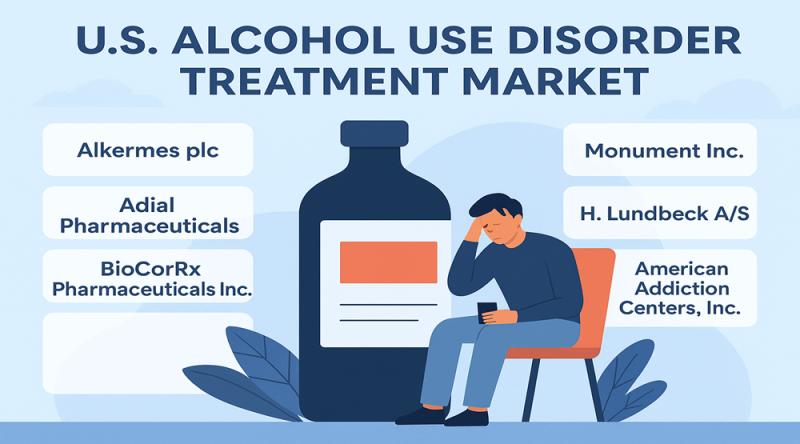Ten years after the Zika outbreak: What happened to the babies born with microcephaly? – BBC

Report on the Long-Term Impacts of the Zika Virus Outbreak in Brazil and Alignment with Sustainable Development Goals (SDGs)
1.0 Introduction: The Lingering Crisis of the 2015-2016 Zika Outbreak
A decade after the 2015-2016 Zika virus outbreak in Brazil, a public health emergency that garnered global attention, the long-term consequences continue to profoundly affect nearly 2,000 families. Children born with congenital Zika syndrome face lifelong health challenges, and their primary caregivers, predominantly mothers, navigate significant social and economic hardships. This report analyzes the situation in Maceió, Alagoas state, through the framework of the United Nations Sustainable Development Goals (SDGs), highlighting failures in public health infrastructure and the resilient, community-led response of the affected families.
2.0 Health and Well-being: A Failure to Uphold SDG 3
The core of the crisis relates directly to SDG 3: Good Health and Well-being. The state’s initial failure to contain the mosquito-borne virus and the subsequent inadequate support for affected families represent a significant challenge to achieving this goal.
2.1 The Health Burden of Congenital Zika Syndrome
- Children born with the syndrome, like Tamara and Moisés, suffer from severe conditions including microcephaly, heart problems, and joint issues.
- Many require feeding tubes, cannot walk or speak, and experience deteriorating health over time.
- Government data indicates that 261 children with the syndrome have died, underscoring the severity of the health outcomes.
2.2 Gaps in Healthcare Provision
Families have faced persistent struggles to secure necessary medical support from the public healthcare system, including:
- Essential surgeries
- Wheelchairs and mobility aids
- Specialized medication and baby formula
This ongoing battle for basic healthcare access demonstrates a systemic failure to ensure healthy lives and promote well-being for all, particularly for vulnerable populations with disabilities.
3.0 Socio-Economic Disparities and Gender Inequality: A Setback for SDGs 1, 5, and 10
The Zika crisis has exacerbated existing inequalities, disproportionately impacting poor women and pushing families further into poverty, in direct opposition to several key SDGs.
3.1 Economic Hardship and Poverty (SDG 1: No Poverty)
- Many mothers were forced to stop working to provide full-time care for their children.
- Families subsisted on minimal state benefits of approximately $265 per month, equivalent to the minimum wage, trapping them in a cycle of poverty.
3.2 Gender Inequality (SDG 5: Gender Equality)
- A significant number of mothers were abandoned by their partners, leaving them as single caregivers and sole providers.
- The burden of care, advocacy, and navigating the healthcare system has fallen almost exclusively on women, highlighting a profound gender disparity in social and familial responsibilities.
3.3 Reduced Inequalities (SDG 10: Reduced Inequalities)
- The outbreak was heavily concentrated in north-eastern Brazil, with 75% of cases registered in this poorer region.
- Research suggests co-factors such as maternal malnutrition and contaminated water may have worsened the virus’s effects, linking the health crisis directly to socio-economic inequality. The lack of conclusive research into why this demographic was so affected points to a systemic disregard for marginalized communities.
4.0 Community Resilience and Advocacy: Advancing SDGs 4, 11, and 16
In response to institutional neglect, the affected mothers organized to create robust support systems, demonstrating powerful grassroots action that aligns with several SDGs.
4.1 Building a Sustainable Community (SDG 11: Sustainable Cities and Communities)
- Mothers formed an independent association to provide mutual support and advocate for their rights.
- Through an application to public housing authorities, approximately 15 families moved into the same housing complex, creating a unique, resilient, and inclusive micro-community.
- This co-living arrangement provides a critical support network for sharing caregiving duties, information, and emotional support.
4.2 Fostering Quality Education (SDG 4: Quality Education)
- The community support network enabled mothers to pursue personal development. Rute Freires was able to resume her studies and obtain a high-school degree because her neighbors cared for her daughter, Tamara.
- This illustrates a direct link between community resilience and access to educational opportunities for women who would otherwise be excluded.
4.3 The Fight for Justice and Strong Institutions (SDG 16: Peace, Justice and Strong Institutions)
- The mothers’ association engaged in a decade-long advocacy campaign for fair compensation.
- In a major victory for citizen-led justice, the group successfully lobbied to overturn a presidential veto on a bill granting them significantly higher financial support.
- This achievement holds the government accountable for its initial failures and establishes a precedent for institutional responsibility.
5.0 Conclusion: A Path Forward Through Increased Support and Research
The successful campaign for increased compensation marks a turning point, offering a pathway toward achieving SDG 8: Decent Work and Economic Growth for these families. The new monthly payment of $1,325 and a one-time compensation of $8,800 will provide economic stability, enabling mothers to invest in private healthcare, better living conditions, and future employment opportunities. However, significant gaps in scientific knowledge about the Zika virus remain. The lack of research into why poor communities were disproportionately affected underscores an ongoing inequality. Continued focus and investment are required to address these health and social disparities, ensuring that the lessons from this crisis contribute to building more resilient and equitable public health systems for the future.
Analysis of Sustainable Development Goals in the Article
1. Which SDGs are addressed or connected to the issues highlighted in the article?
The article discusses several interconnected issues that are relevant to multiple Sustainable Development Goals (SDGs). The following SDGs are addressed:
- SDG 1: No Poverty – The article highlights the financial struggles of the affected families, many of whom live on minimum wage state benefits and have had to stop working. Their fight for increased financial compensation is a central theme.
- SDG 3: Good Health and Well-being – This is the core SDG, as the article revolves around the health consequences of the Zika virus, including congenital Zika syndrome, microcephaly, the need for continuous medical care (surgeries, physical therapy, medication), and the public health response to the epidemic.
- SDG 4: Quality Education – The article touches upon education when it describes how one mother, Rute, was able to obtain her high-school degree and now aims for a qualification in education, which was made possible by the community support system.
- SDG 5: Gender Equality – The article strongly emphasizes the gendered impact of the crisis. It notes that mothers are the primary caregivers, many were abandoned by their husbands, and they formed their own association to fight for their rights and support each other.
- SDG 10: Reduced Inequalities – The issue of inequality is prominent, as the article states the virus disproportionately affected poor women in north-eastern Brazil. The families’ struggle for adequate compensation and healthcare services is a fight against the inequality of outcome.
- SDG 11: Sustainable Cities and Communities – The article connects to this goal through the provision of public housing that allowed nearly 15 mothers to live in the same complex, creating a resilient support network. It also mentions efforts to control the mosquito-borne virus by educating citizens to clear stagnant water, which relates to safe living environments.
- SDG 16: Peace, Justice, and Strong Institutions – This goal is relevant due to the mothers’ “legal battles against the healthcare system” to secure necessary medical supplies and their successful political struggle to have a presidential veto on their compensation bill overturned by Congress, demonstrating a push for responsive and just institutions.
2. What specific targets under those SDGs can be identified based on the article’s content?
Based on the article’s narrative, several specific SDG targets can be identified:
- Target 1.3: Implement nationally appropriate social protection systems. The article details the families’ reliance on state benefits (“around $265 per month”) and their successful campaign to increase this social protection through a new bill providing higher monthly payments.
- Target 3.3: End the epidemics of… neglected tropical diseases and other communicable diseases. The Zika virus is a mosquito-borne communicable disease, and the article discusses the 2015-2016 epidemic, its consequences, and the lingering threat of a new outbreak.
- Target 3.8: Achieve universal health coverage, including financial risk protection and access to quality essential health-care services. The mothers’ fight to secure “surgeries, wheelchairs, medication and baby formula” and Rute’s dream of “private health insurance” for her daughter underscore the gaps in achieving this target for vulnerable families.
- Target 3.b: Support the research and development of… medicines for the communicable… diseases that primarily affect developing countries. The article explicitly points out the “lack of research” into why the outbreak was concentrated in north-eastern Brazil and why it ceased, highlighting a failure to meet this target.
- Target 5.4: Recognize and value unpaid care and domestic work. The article shows that “Many of the mothers had stopped working” to provide full-time care and were often abandoned by their partners, illustrating the immense and unrecognized burden of unpaid care work placed on women.
- Target 10.2: Empower and promote the social, economic and political inclusion of all, irrespective of… disability… or economic or other status. The entire story is about a group of poor women with children with disabilities organizing to demand their social and economic inclusion and rights.
- Target 11.1: Ensure access for all to adequate, safe and affordable housing. The article mentions that “almost 15 [mothers] were able to move into the same [public housing] complex,” which directly relates to this target.
- Target 16.7: Ensure responsive, inclusive, participatory and representative decision-making. The mothers’ association successfully lobbied to have “President Lula’s veto on the bill… overturned,” which is a clear example of participatory action leading to a responsive decision from a state institution (Congress).
3. Are there any indicators mentioned or implied in the article that can be used to measure progress towards the identified targets?
The article provides specific quantitative and qualitative information that can serve as indicators for measuring progress:
- Indicator for Target 1.3: The monetary value of social protection benefits. The article provides exact figures: the initial state benefit of “$265 per month” and the new, higher monthly payment of “$1,325,” which allows for a direct measurement of the increase in social protection.
- Indicator for Target 3.3: Morbidity and mortality rates associated with the disease. The article states that “nearly 2,000 babies” were born with the syndrome and “261 children diagnosed with congenital Zika syndrome… have died,” providing clear mortality and morbidity data.
- Indicator for Target 5.4: The disproportionate time spent on unpaid care work by women. While not quantified in hours, the article implies a significant indicator by stating, “Many of the mothers had stopped working,” and that men “rarely came to the group,” pointing to a heavy and unequal care burden on women.
- Indicator for Target 10.2: The economic disparity of those affected. The article indicates that the crisis disproportionately impacted “poor women” in “north-eastern Brazil, where 75% of the cases… were registered,” highlighting that progress must be measured by how well support reaches these specific vulnerable groups.
- Indicator for Target 11.1: The number of people benefiting from public housing programs. The article specifies that “almost 15” families were able to move into a public housing complex, providing a discrete number.
- Indicator for Target 16.7: The outcome of civic engagement. The successful overturning of a presidential veto on the compensation bill serves as a powerful qualitative indicator of responsive and participatory decision-making.
4. SDGs, Targets and Indicators Table
| SDGs | Targets | Indicators Identified in the Article |
|---|---|---|
| SDG 1: No Poverty | 1.3: Implement nationally appropriate social protection systems. | Initial state benefits of ~$265/month; new compensation bill provides a one-off payment of $8,800 and monthly payments of $1,325. |
| SDG 3: Good Health and Well-being | 3.3: End epidemics of communicable diseases. 3.8: Achieve universal health coverage. 3.b: Support research and development. |
Nearly 2,000 babies born with congenital Zika syndrome; 261 child deaths. Families in legal battles for surgeries, wheelchairs, and medication. Explicit mention of a “lack of research” into the virus. |
| SDG 4: Quality Education | 4.4: Increase the number of adults with relevant skills for employment. | A mother (Rute) obtained a high-school degree and is aiming for a qualification in education. |
| SDG 5: Gender Equality | 5.4: Recognize and value unpaid care and domestic work. | Mothers stopped working to become full-time caregivers; several were abandoned by their husbands, highlighting the unequal burden of care. |
| SDG 10: Reduced Inequalities | 10.2: Empower and promote the social, economic and political inclusion of all. | The virus disproportionately affected “poor women” in north-eastern Brazil (75% of cases). The mothers’ association was formed to fight for inclusion and rights. |
| SDG 11: Sustainable Cities and Communities | 11.1: Ensure access for all to adequate, safe and affordable housing. | “Almost 15” mothers were able to move into the same public housing complex to form a support network. |
| SDG 16: Peace, Justice, and Strong Institutions | 16.7: Ensure responsive, inclusive, participatory and representative decision-making. | The mothers’ association successfully lobbied Congress to overturn a presidential veto on their compensation bill. |
Source: bbc.com

What is Your Reaction?
 Like
0
Like
0
 Dislike
0
Dislike
0
 Love
0
Love
0
 Funny
0
Funny
0
 Angry
0
Angry
0
 Sad
0
Sad
0
 Wow
0
Wow
0



























;Resize=805#)



















































